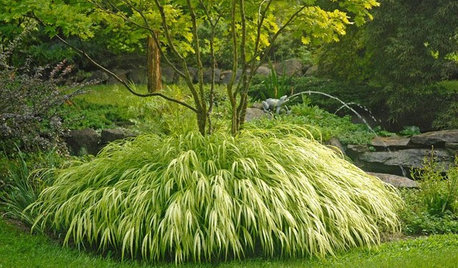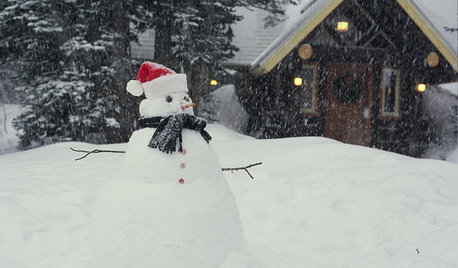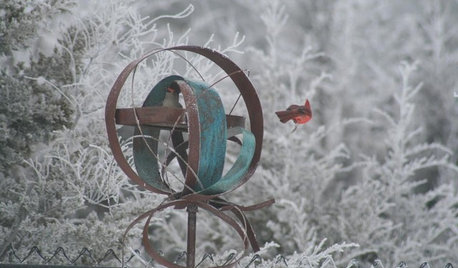sue - I have a small flower garden(perennials) day lilies,
gladiolas and such how do I prepare them for a cold, snowy, winter? Do I cut
them back, mulch around them, this is my first garden, please help it's
getting cold here already.
Amanda PA z 5/6 - Many mums are supposed to be hardy, but are not
reliable. Here in Pittsburgh, the worst problems for mums are cold with no
snow cover, frost heave and wet soil that freezes. Your best bet is to
divide your plants that survive and see if anyone local has divisions to
trade. Also minimize above problems by mulching, planting in well drained
soil, etc. White and rust colored mums seem to be especially hard to winter
over. I don't know why.
Andie MO/Zone 6a - A good mulch cover is essential to prevent
heaving. Leaves are a good and cheap solution. I also walk the garden when
we get unusually warm weather in January and February, and tap down the soil
in places where I see evidence of heaving. Mums are unpredictable. I have
had a bunch of failures, and then again, I have plants that thrive with
little or no care. Who knows!
JP WI z4/5 - I've had tremendous success with a yellow mum call
Westpointer. Two have survived with no care whatsoever (though I'm going to
follow advice here from now on). Two Radiant Lynn's have done fairly well
too.
JJJC zone5a ILL - I do not cut down my garden mums. I practice the
"old" way, Summer blooming perennials get cut down to about 4", but Fall
blooming perennials don't get their trim until spring. I do mulch the mums
though and watch for heaving if snow cover is light. I guess what works for
you best, stick with. Half the fun of gardening is in the trying!
Doug ONT/Z5 - put your coat on and run right out side and dig up
those glad bulbs. They are not winter hardy. Clean them up and put them in a
cardboard box with dry wood shavings or peat and store them in your cool
part of the basement to keep dry. Fruit cellars work fine but not everyone
has one.As for your day lilies nothing needs to be done, you can cut the
foliage back to the ground after a freeze. Most perennials like a little
blanket of warmth over them. Leaves,straw,snow(yes I said snow)to keep them
from thawing out on the warm winter days and to protect them from drying
winds. You can wait until spring to cut back most. Michigan is probably
zone5 most will survive.
Rick - I do like to cut back all of my perennials to keep the bugs
at bay, and from nesting during the winter. I cut all plants to two inches
from the ground. I do not cut back any of my ground cover such as sedums,
ajuga, or chicks and hens. I do however cut back bishops weed. It is wise to
dig up any canna tubers as they are not winter hardy also. I just take a few
clumps and keep them in my basement in a brown paper bag, and then break
them up into small tubers for planting in the spring. I prefer evergreen
branches to cover my perennials as they do not squash down and smother the
plants.
Posted by: Barbara MA/Z5 - Because the idea is to let the
perennials go dormant before the ground freezes in our area, I don't
fertilize after the middle of August. Too much growth would keep the roots
from settling in for their long sleep. I usually put a mulch of well
composted manure over the gardens (not on the plant crowns, but around them)
in late November, then scratch it in the early spring to give the plants a
gentle nudge. I then use 5-10-5 or 10-10-10 in mid to late April when new
growth is a few inches high.
Asle Serigstad - Very careful with fertilizer now! Avoid any
Nitrogen, but a very small amount of fertilizer without Nitrogen will be
stored in the basal buds, and helps the plants make it through winter. But
Nitrogen now would be fatal.
mark AL/zone7b - my garden is composed of wooded islands with
turfgrass weaved throughout. I just rake the leaves off the grass and into
the islands, taking care not to overpile in one place, and Im done. (well,
not exactly...down south we have these nasty water oaks that shed their
little leaves all autumn and winter, so it seems we're never done raking...)
no shredding or composting needed. the amazing thing is I never have enough
leaves to suit me, so I "steal" my neighbor's leaves...
Asle - The perennials will definitely be safer with a cover of
leaves. This is nature's way to protect it self. Do not rake them away till
spring. I grow lots of perennials, and I know for sure that more dies out if
not covered by leaves etc.
Grace PA/Zone 6 - If you have bulbs you should get the leaves
off of them early, or the foliage will come up whitish, starved for
sunlight.
Barbara MA/Z5 - . You've probably noticed that the maple leaves
stay very wet at the bottom of the pile; they also compact into heavy mats.
In my experience, more perennials are killed by being too wet over the
winter than by being exposed to cold weather. I'd rake off the leaves, shred
them if you can and return them to the beds as mulch and soil improvement. I
do leave some leaves in a shady section of my garden where there are mostly
woodland plants, but try to get them off really early (in March while the
ground is often still frozen) and it is a job and a half!
Ruta - I rake the leaves, grind them up and put them back. That
way they give the protection but are small enough to decompose and don't mat
or clump. You can do this with a vac/blower which mulches up the leaves, or
I got a great tip from another site-to put the leaves into a garbage can and
use a weed whacker.
Kirk Zone9 Oregon - You are supposed to rake up the leaves of
Bigleaf Maple. Those leaves will mat down and they can smother plants. They
can even do that in nature. It would be best for you to rake them up.
Janet OH - I have done both over my years of gardening .. raked
'em and left 'em. Everyone above who are for clearing off dropped leaves,
made their statements for the quite correct reasons. CLEAN THEM UP AND OUT.
That is, if you live in a region of winter freeze. They mat down, cut off
light and oxygen, promote bacteria growth. If you are unsure, just leave
them be (pardon the pun) then get back to us in the spring complaining about
all the hard work and problems created by raking off the leaves from your
emerging spring beds, how difficult it was and how much young growth you
killed.
Doug ONT/Z5 - In the cold zone3 area I would definitely not cut
back the first year at least.Yes the stubble will help trap leaves an most
important snow to help mulch those plants for winter. Lillies and peony can
be cut back to prevent disease.
Gail NE Z4B - I think cutting back this fall would depend on a
couple of factors. If you have something that is quite tall and or bushy AND
you have windy conditions, I would think that it would be a good idea to
reduce some of that bulk. If that is the case in your area, I think the
practice of cutting back to 6"-12" would be sensible. Otherwise, I would
only cut back phlox, peonies, and other plants that you might have that
would be susceptible to powdery mildew or black spot or nasty stuff like
that. And, yes, you would cut back to green in the spring.
AndieMO/Zone 6a - The only thing I will add is that peonies
should be cut back because the foliage can harbor nasty diseases that will
affect the plant next spring.
Asle - Do not cut back until spring. The stems help to catch snow,
to giver better snow cover, and also catches leaves and other things for
cover. But just as important, if cut back there will be open "wounds", and
moisture will go down in the part of the stems left after cutting, causing
the root to rot (decay).
Skip MNZ4 - Jeff Illes, professor at Iowa State University
recently did a study on the cutting back of mums. They discovered that
cutting back in the fall resulted in winter damage to the plant. They
concluded that cutting back probably removes carbohydrates used for plant
food reserves and sets up the conditions for winter plant injury. It is also
felt that cutting back ornamental grasses involves the same processes and
can also result in winter injury.
Janet Oh/Z6 - Over the 32 years I have grown mums (!), I have
experienced that NOT cutting back in the fall, resulted in young shoots
being pulled (raked) off in the spring during clean up, because mums begin
to sprout in my climate (Z6) about April. Isn't it so intriguing how perens.
are so productively DIFFERENT in differing climates?
Andie MO/Zone 6a - This is such a great debate! Maybe I can
argue with myself. Pro cutting: No slimy residue to clean up in the spring;
no diseases or bugs wintering over in the dead foliage; a neater look to the
garden (O.K., so I'm anal) Con: No snow/leaf catching foliage for protection
against winter's cold. A bare looking garden.
Min BC/7a - It seems to me that "to cut back" or "not to cut
back" depends on a number of factors: (1) local climate (2) the plant type
(3) personal preference. I personally cut back some, but leave the others
alone. How do I decide? I leave alone those dead foliage and seed heads that
provide points of interest - poppies, Chinese lanterns, etc. Others I have
left alone because the cycle of colour change, dying and subsequent decay
just appeal to me (particularly Hostas). There are others that I would
definitely cut - Irises, for example, because they can leave quite a mess
after the slugs have picked their way through them, as part of their late
seasonal feast. I dig most of my dahlia tubers out, but those that I leave
in the ground (i.e., in drier and more sheltered spots), I would definitely
cut down - they are aethestically unpleasant, rotting after that first hard
frost. I have many more examples, but it will suffice for now. The point is
that you do not have to be on one side or the other of the argument ("to
cut" or "not to cut"). It makes the whole experience of gardening much more
interesting and enjoyable if one could take into consideration each
individual plant, it's location and any winter interest it may provide,
rather than to apply a single wholesale practice for the entire garden (even
though the latter is obviously the easier alternative).
Bonnie - I stopped the routine of cutting back perennials about
three years ago except for irises and perennial carnations. What I noticed
in cleaning up in the spring ever since then was a significant increase in
the number of ladybugs hibernating amongst the dried leaves -I assume
ladybugs hibernate? - and therefore a much needed army of predators
throughout the summer for those nasty aphids. So maybe not cutting back also
provides winter homes for good bugs.













Related Discussions
preparing for a safe winter
Q
My summer-like Saturday or How to prepare for winter
Q
Another FUNNY thread from the archives
Q
What Are Some Long Flowering Perennials (archived thread)
Q